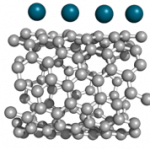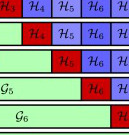 In his most recent publication “Improved recursive Green’s function formalism for quasi one-dimensional systems with realistic defects” Fabian shows a significant speedup of his recursive Green’s function formalism [bibcite key=teichert2017improved]. Based on that, the conductivity of carbon nano tubes can be computed much faster. This allows to compute tubes of realistic size with a huge number of defects. Continue reading
In his most recent publication “Improved recursive Green’s function formalism for quasi one-dimensional systems with realistic defects” Fabian shows a significant speedup of his recursive Green’s function formalism [bibcite key=teichert2017improved]. Based on that, the conductivity of carbon nano tubes can be computed much faster. This allows to compute tubes of realistic size with a huge number of defects. Continue reading
Tag Archives: electron transport
Empirical transport model of strained CNT transistors used for sensor applications
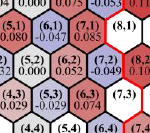 Carbon nanotubes show electronic properties which are remarkably sensitive to mechanical strain. Thus, CNTs are expected to be promising candidates for nano scale strain sensors. Even more, they are discussed as a key component of future nano-opto-electro-mechanical systems (NOEMS).
Carbon nanotubes show electronic properties which are remarkably sensitive to mechanical strain. Thus, CNTs are expected to be promising candidates for nano scale strain sensors. Even more, they are discussed as a key component of future nano-opto-electro-mechanical systems (NOEMS).
Consequently, a comprehensive model for strained CNT transistors was recently published by Christian [bibcite key=wagner2016empirical]. Continue reading
Two contributions to MAM 2014 are now published in Micrelectronic Engineering
[bibshow file =js.bib]
Two contributions from the group are now published in a special issue of Microelectronics Engineering which contains original paper from the “Materials for advanced metallization conference 2014” held in Chemnitz, Germany. Continue reading
Strong localization in defective carbon nanotubes: a recursive Greenʼs function study
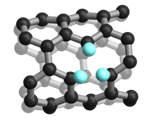 [bibshow file =js.bib]
[bibshow file =js.bib]
The paper by Fabian appeared recently in New Journal of Physics [bibcite key=teichert2014strong]. Based on a very efficient linearly scaling algorithm Fabian was able to calculate the electron transport in defective CNTs of realistic size, i.e. up to a length of microns. Continue reading
Metallic carbon nanotubes with metal contacts: electronic structure and transport
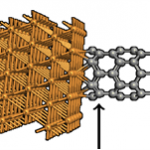 [bibshow file =js.bib]
[bibshow file =js.bib]
Andreas managed to publish the main results of his PhD-thesis in a nanotechnology paper.[bibcite key=zienert2014metallic] The paper deals with the contact properties of metallic carbon nanotubes to several metals, which are of relevance for future carbon electronics. Continue reading

